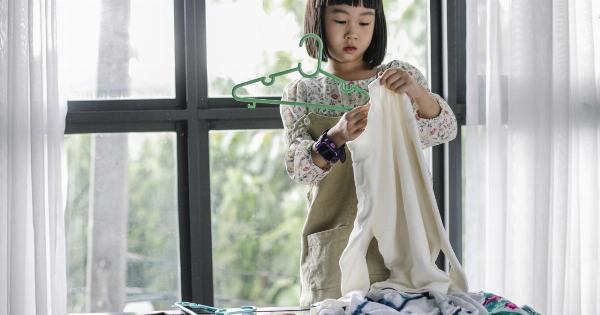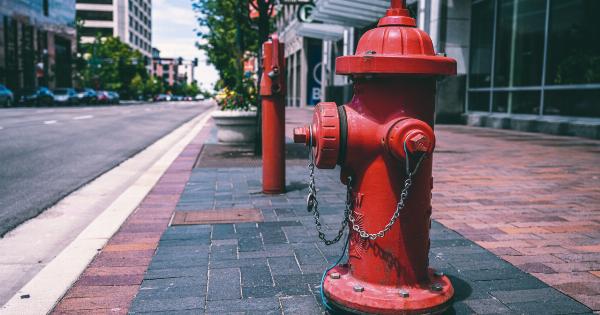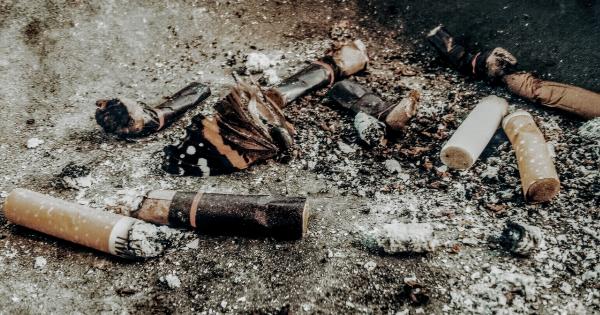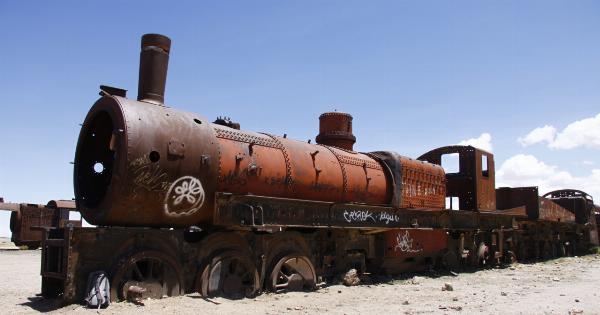Our homes are filled with a plethora of appliances that make our lives easier. From refrigerators and washing machines to microwaves and coffee makers, we rely on these devices to perform various tasks seamlessly.
However, hidden beneath their shiny exteriors, there are potential dangers that we often overlook. In this article, we will explore the perils lurking in our home appliances and understand how we can ensure our safety while using them.
1. Fire Hazards
One of the most significant perils associated with home appliances is the risk of fire. Various factors can lead to a fire outbreak, such as faulty wiring, overheating, or misuse of appliances.
Certain appliances, like electric heating devices or irons, can generate high levels of heat, increasing the chances of a fire if left unattended for long periods. It is crucial to follow the manufacturer’s instructions, avoid overloading circuits, and keep a fire extinguisher handy to minimize the risk.
2. Electrical Shocks
Another common peril lurking in our home appliances is the risk of electrical shocks. As appliances age or undergo wear and tear, their electrical components may become faulty.
It is essential to regularly check cords, plugs, and sockets for any signs of damage. Never use an appliance with exposed wires or frayed cords, as it increases the chances of electrical shock. Furthermore, avoid using appliances when your hands are wet or touching them with metallic objects.
3. Carbon Monoxide Poisoning
Appliances that burn fuels, such as gas stoves, furnaces, or water heaters, produce carbon monoxide (CO) gas. When these appliances are not adequately ventilated, the gas can accumulate inside the home, leading to carbon monoxide poisoning.
This colorless, odorless gas is extremely dangerous and can cause severe health issues or even death. Installing carbon monoxide detectors in your home can alert you to the presence of this gas and help you take necessary actions to prevent poisoning.
4. Gas Leaks
Gas leaks are another peril that can potentially turn disastrous if not addressed promptly. Gas appliances, like stoves or dryers, may develop leaks over time due to faulty connections or damaged supply lines.
Gas leaks can be hazardous as they are highly flammable and can lead to explosions or fires. It is crucial to be aware of the signs of a gas leak, such as unusual odors or hissing sounds near gas appliances. If you suspect a gas leak, evacuate the premises immediately and contact the appropriate authorities.
5. Chemical Exposure
Many household appliances, such as air fresheners, cleaning solutions, or paints, contain chemicals that can be harmful if exposed.
Continuous inhalation or direct contact with such chemicals can cause respiratory problems, skin irritation, or allergic reactions. When using appliances that emit or involve chemicals, ensure proper ventilation in the room, and take necessary precautions such as wearing gloves, masks, or goggles to minimize exposure to harmful substances.
6. Accidental Injuries
While appliances come equipped with safety features, accidents can still occur if they are not used correctly. For example, using sharp blades in a blender without proper handling or reaching into a running appliance can lead to severe injuries.
Always take precautions while using appliances and read the user manuals to understand their proper usage and potential risks. Keep appliances away from the reach of children and avoid multitasking that can distract you from using them safely.
7. Water Leaks and Flooding
Appliances that involve water, such as washing machines, dishwashers, or water heaters, can pose risks of water leaks and flooding.
Old or faulty hoses, connections, or internal components can lead to unexpected water leakage, causing damage to your home. Regularly inspect the hoses and connections of water-based appliances and replace them as needed. You can also install water leak detectors that can alert you in case of any leakage, thereby preventing extensive damage.
8. Microwave Hazards
Microwaves have become an essential part of our kitchens, allowing us to quickly prepare meals. However, they also carry potential risks if not used properly.
Placing metal objects or containers with metallic accents in a microwave can result in sparks or fires. Microwaving items that are not microwave-safe can release harmful chemicals or gases. It is crucial to follow the instructions, use microwave-safe cookware, and avoid overheating certain foods that can explode, such as eggs.
9. Appliance Tip-Overs
Appliance tip-overs can be dangerous, especially if they involve heavy or tall devices, such as televisions, refrigerators, or bookshelves.
Improper installation, unsteady surfaces, or accidental bumps can cause these appliances to topple over, potentially causing injuries or property damage. Secure heavy appliances to the wall, use appropriate brackets or straps, and place them on stable surfaces to prevent tip-overs.
10. Combustible Dust Accumulation
Several appliances, such as dryers or vacuum cleaners, create high levels of air movement that can stir up and accumulate combustible dust particles.
If these particles come into contact with a heat source or electrical element, they can ignite, leading to fires or explosions. Regularly clean and maintain appliances to prevent excessive dust buildup, especially in areas such as dryer vents or vacuum canisters.
Safeguarding Against Perils
While the perils mentioned above exist, there are several precautions you can take to safeguard yourself and your home against these risks. Here are some essential safety measures to follow:.
1. Regular Maintenance
Ensure that appliances undergo regular maintenance checks and servicing by qualified professionals. This will help identify potential hazards and prevent accidents caused by faulty components.
2. Read User Manuals
Always read and understand the user manuals and safety instructions provided with each appliance. Familiarize yourself with the recommended usage guidelines and potential risks associated with the appliance.
3. Install Smoke and Carbon Monoxide Detectors
Equip your home with smoke detectors and carbon monoxide detectors in strategic locations. Regularly check and replace the batteries to ensure their proper functioning at all times.
4. Proper Ventilation
Ensure that appliances requiring ventilation, such as gas stoves or dryers, have proper venting systems in place. This helps in eliminating hazardous gases or fumes from the living space.
5. Secure Heavy Appliances
Use appropriate brackets, straps, or wall mounts to secure heavy appliances and prevent tip-overs. This is particularly important for tall devices that can cause severe injuries or property damage if they fall over.
6. Practice Safe Usage
Handle appliances with care and follow recommended practices for their usage. Avoid using appliances if you are fatigued or distracted, as this can increase the chances of accidents.
7. Keep Appliances Away from Water
Use appliances away from water sources, and keep them dry whenever possible. Unplug appliances after use and avoid touching them with wet hands to minimize the risk of electrical shocks.
8. Supervise Children
Keep appliances out of the reach of children and supervise them when they are around appliances. Educate them about the potential dangers and teach them proper usage to avoid accidents.
9. Unplug When Not in Use
When appliances are not in use, unplug them to minimize the risk of electrical hazards, such as short circuits or power surges.
10. Act Promptly on Warning Signs
If you notice any warning signs, such as unusual odors, strange noises, or sparks from an appliance, take immediate action. Unplug the appliance and contact a professional to inspect and repair it.































